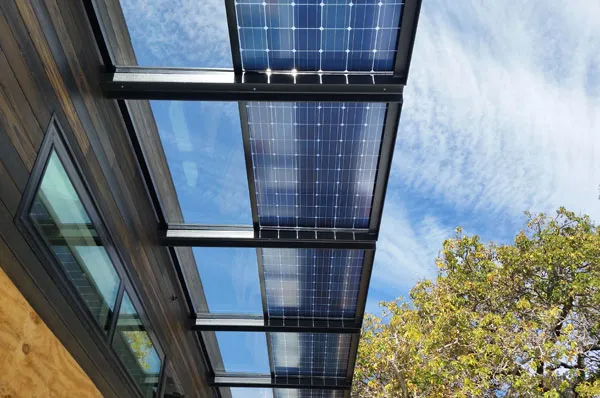Unlock More Solar Power with a High-Efficiency Bifacial Solar Panel
If you’re looking to upgrade your residential solar energy system with a solution that delivers more energy in less space, the bifacial solar panel is the answer. Unlike traditional single-sided panels, bifacial solar panels for sale capture sunlight from both the front and rear surfaces, converting reflected light into usable energy. Whether you’re a homeowner seeking more power output or an installer exploring innovative technologies, this next-generation panel redefines solar efficiency.

Residential Advantages of the Bifacial Solar Panel
One of the biggest breakthroughs in solar energy is the integration of bifacial solar panels in residential installations. These dual-sided panels are ideal for homes with open rooftops, pergolas, or ground-mounted systems that can take advantage of reflected sunlight from surfaces such as white roofs, concrete, or gravel.
By capturing sunlight from both sides, a bifacial solar panel can increase overall energy production by 10% to 30% compared to standard panels. This added efficiency means homeowners can use fewer panels to generate the same amount of energy—saving on space, installation labor, and balance-of-system costs. It’s no surprise that interest in bifacial solar panels for sale is soaring among homeowners who want to maximize their return on investment.
Easy Cleaning and Maintenance Tips for the Bifacial Solar Panel
Maintenance plays a crucial role in ensuring the performance of any solar system, and the bifacial solar panel is no exception. However, it doesn’t demand complicated care—just the right techniques applied regularly. Since both sides of the panel contribute to energy generation, keeping both surfaces clean is essential.
Use soft-bristled brushes, purified water, and non-abrasive cloths to clean the panels, preferably in the early morning or evening when the surface is cool. Avoid high-pressure washers that could damage the frame or protective glass. And always check both the front and back surfaces for dust, bird droppings, or snow accumulation.
Properly maintaining your bifacial solar panel not only extends its lifespan but also preserves its high conversion efficiency. Many providers of bifacial solar panels for sale now offer optional cleaning kits or professional cleaning services to help you protect your investment effortlessly.
Why Choose the Bifacial Solar Panel Over Single-Sided Panels?
When comparing a bifacial solar panel to a conventional single-sided solar panel, the differences are striking. Single-sided panels rely solely on direct sunlight hitting the front, limiting their output to one light source. In contrast, the bifacial solar panel utilizes rear-side sunlight as well—reflecting from nearby surfaces or the ground.
This additional energy capture capability dramatically improves overall system efficiency, especially in areas with high albedo (reflective) surfaces such as snow-covered regions, white gravel rooftops, or even sandy terrains. Plus, bifacial solar panels often come in frameless designs that reduce shading losses and allow for better ventilation, helping with thermal management.
While the bifacial solar panel price might be slightly higher upfront compared to single-sided alternatives, the long-term benefits in energy generation, system compactness, and ROI far outweigh the initial cost. The return on investment is further boosted by declining prices in the market and attractive government incentives in many regions.
Pricing Trends and Growth of the Bifacial Solar Panel Price Market
As solar technology becomes more mainstream, the bifacial solar panel price continues to become increasingly competitive. Manufacturers are now producing these panels in higher volumes, leading to cost reductions and broader availability. In the past, bifacial solar panels for sale were targeted mainly at commercial or industrial applications. Today, thanks to technological scaling, homeowners can easily access them at affordable rates.
Market forecasts indicate continued demand growth over the next decade, driven by enhanced efficiency, better durability, and falling prices. The cost of a bifacial solar panel is gradually closing in on that of traditional panels—especially when calculated on a cost-per-watt basis. Consumers are becoming more aware that, although they pay slightly more upfront, the higher energy output results in greater savings over time.
In addition, more manufacturers are offering comprehensive warranties and quality guarantees, making it even more reassuring for homeowners to invest in these high-performance panels.
Bifacial Solar Panel FAQs
What makes a bifacial solar panel better for residential use?
It can capture light from both sides, increasing energy production and reducing the number of panels needed—ideal for rooftops with good reflectivity.
How often should I clean my bifacial solar panel?
Cleaning every 3 to 6 months is generally sufficient, but areas with heavy dust, snow, or bird activity may require more frequent attention.
Are bifacial solar panels for sale expensive?
De bifacial solar panel price is slightly higher than traditional panels, but the extra efficiency leads to greater long-term savings and faster ROI.
Can I install a bifacial solar panel on any roof?
They work best on rooftops or frames with some reflectivity beneath the panels. Talk to your installer to evaluate your roof’s suitability.
How does a bifacial solar panel compare to a traditional panel in winter?
Its ability to absorb reflected sunlight from snow boosts performance during winter, making it more effective than single-sided panels in snowy climates.
-
String Solar Inverter: The High-Efficiency Solution for Smart Solar EnergyNieuwsJul.14,2025
-
Revolutionizing Rooftop Energy with the Power of the Micro Solar InverterNieuwsJul.14,2025
-
Power Independence with Smart Off Grid Solar Inverter SolutionsNieuwsJul.14,2025
-
On Grid Solar Inverter: Powering the Future with Smart Grid IntegrationNieuwsJul.14,2025
-
Monocrystalline Solar Panels: High-Efficiency Power for the Future of Clean EnergyNieuwsJul.14,2025
-
Bifacial Solar Panel: A Smarter Investment for Next-Generation Energy SystemsNieuwsJul.14,2025







